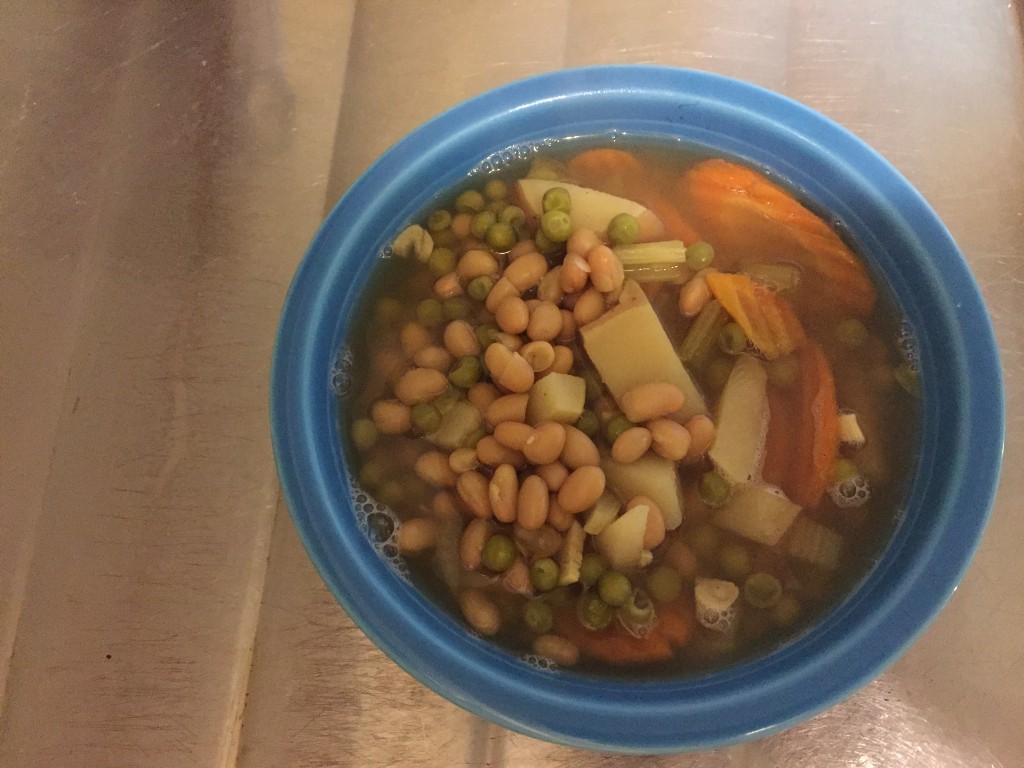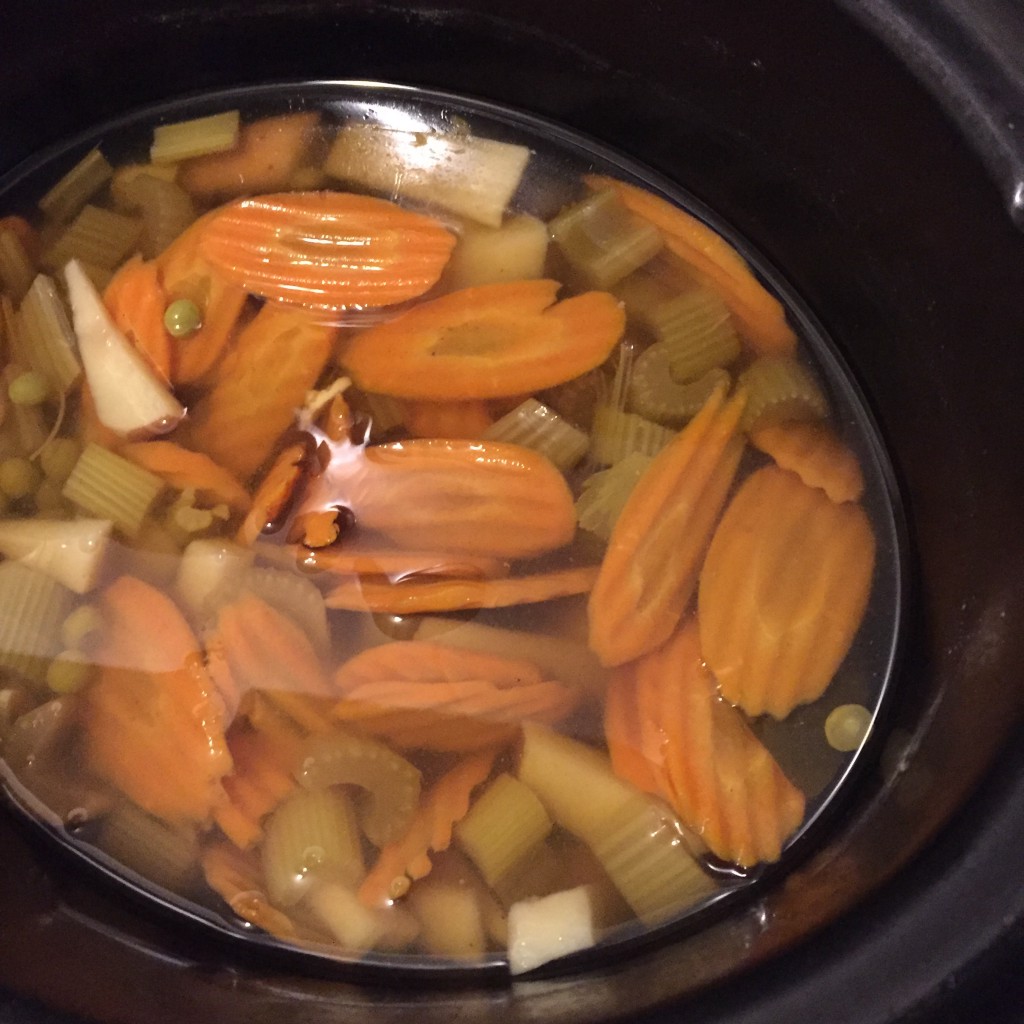You Have to Put Enough Meals in the Soup
On cooking and budgeting.

So this is going to sound really weird, but there is very little in my life that is not, at its core, really weird—I wanted to make chicken noodle soup, but I am busy enough right now, between working and volunteering and teaching and novel-revising, that I didn’t want to deal with the extra work required to defrost and handle and clean up after raw chicken. (Plus it’s been pouring rain almost every day, and I didn’t want the hassle of putting on boots and rain gear just to walk a garbage-bagged package of raw chicken to the dumpster behind my apartment so I could get it out of the house before it started to smell like rotting raw chicken juice, and then coming back and carefully washing the mud off my suede boots so they’d still look nice enough to wear to events and stuff.)
That’s why I ended up buying chicken broth, three potatoes, carrots, celery, and a can of white beans to make “no chicken and no noodle soup.” (The no noodle thing was because noodles don’t freeze well, and I was hoping to make enough soup to freeze.)
I ate the first bowl of this soup, after it had slow-cooked and filled my house with its chicken-broth-and-garlic aroma, and was hungry again literally 45 minutes later. Not, like, “a little bit hungry.” More like “okay where is dinner did we have dinner yet because I want dinner NOW” hungry.
This isn’t what usually happens when I make soup.
Then I started to do the math.
I’d put in three small red potatoes, one 15-oz can of white beans, plus celery sticks, carrot slices, and a little less than a cup of frozen peas.
There were not enough meals in this soup.

If I were serving a non-soup dinner, I would not plate out two-thirds of a potato and one-fifth of a can of beans, plus a few celery sticks, carrot slices, and peas to gnaw on.
You’d need at least a whole potato per meal, plus half a can of beans.
Which is something I had not previously thought about, in terms of soup.
It is something I have thought about in terms of budgeting, especially in the large-scale sense of “if you don’t plan ahead and make sure you have enough food for the week or enough toilet paper for the weekend or enough time to get to the venue, you’re going to have to choose the more expensive option of ordering takeout or buying from a convenience store or taking a Lyft instead of the bus.”
In this case the “more expensive option” was first bulking out my bowl of soup with Wheat Thins and then stopping by the grocery store and buying even more calories in the form of M&M cookies from the bakery section. (Why are grocery bakery cookies so soft and delicious? What do they put in them?)
And okay, whatever, I made a mistake with my soup and probably spent $5 trying to fix it. (Also, I won’t be able to freeze any of this soup for later because I’m eating it twice as quickly since there’s half the actual food in it.)
But keeping all of these calculations—do I have enough food, do I have enough time, am I earning enough, will I be able to shop for what I need or will I get stuck paying more for something I don’t really want, how will my decisions today affect my life one month and three months and one year from now—requires a lot of work and takes a lot of time. (In my case there is an immense amount of scheduling involved, and blocking off times for slow cooking and grocery shopping and laundry, and I am only one person who only has to feed and take care of herself.)
And I thought I could save just a little bit of that time by not having to plan my day around raw chicken.
Support The Billfold
The Billfold continues to exist thanks to support from our readers. Help us continue to do our work by making a monthly pledge on Patreon or a one-time-only contribution through PayPal.
Comments